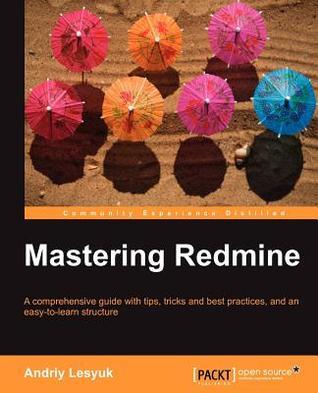What do you think?
Rate this book


366 pages, Paperback
First published January 1, 2013
It was a big hole not having a book for such a nice and solid project management system around but finally, first (as far as I know) Redmine book is on the market. Dear Andriy (also owner of a lot of plugins for Redmine and kind person) recently wrote the first book about Redmine. Congratulations again :).
Let me cut short and talk a little bit about the book. I'm Redmine administrator and user for years and I learnt a lot of things about Redmine from blogs, redmine.org, forums etc. But after the book, I said myself that I had a lot to learn (Especially from Andriy) The book gives you more than introducing you the Redmine but especially and the most important part, Andriy's experiences. The most important thing must be in a book (Hey, I'm not talking about story books :) ) is the authors' experience in my opinion because in the computer world, experience means time and time means money :).
The book does not cover only functionalities of Redmine but also how to use them in an effective manner. Of course, you will be able to install it after reading the book but most important part is to learn how to use Redmine. I would like to make a tiny criticism at this point. The book teaches you how to install Redmine on a Ubuntu system by repositories or some bundles. It would be very nice to touch on how to install it locally on a Linux machine; particularly for those who runs/would like to run their Redmine copies on shared servers and does not have administrative rights. I was really confused in my first times how to install Redmine on a shared server. There were a lot of dirty info around and this kind of info would be very valuable for me.
The book persistently emphasize the time tracking features of Redmine, particularly, reserving a chapter for this. This is another best feature of the book besides authors' valuable experiences because it's most powerful side (but rarely used even by me) of Redmine. Also let me add that you are not limited only for the stock functionalities of Redmine. Andriy mentions about the plugins that makes Redmine exceeds your expectations. I can not imagine Redmine without plugins and you can find most useful plugins for Redmine and how to use them. I want to mention here that I love the plugins By Andriy and thanks for them. Personalization chapter was my second favorite in the book and teaches exactly how you use Redmine much more effectively and configure it according to your own needs. Meanwhile, I can guarantee that you will find answers to all of your questions about Source Control Management and Redmine integration.
The book Mastering Redmine addresses not only Redmine users, but also administrators and perhaps plugin developers. You can absolutely find a thing to learn in the book and every person deals with Redmine must have this book in the library. Also Everybody knows that profit is not high especially for software books, so let me add that I appreciated packtpub that they support those kind of new software books. You can buy the book from Amazon or prefer to check out the book on packtpub.